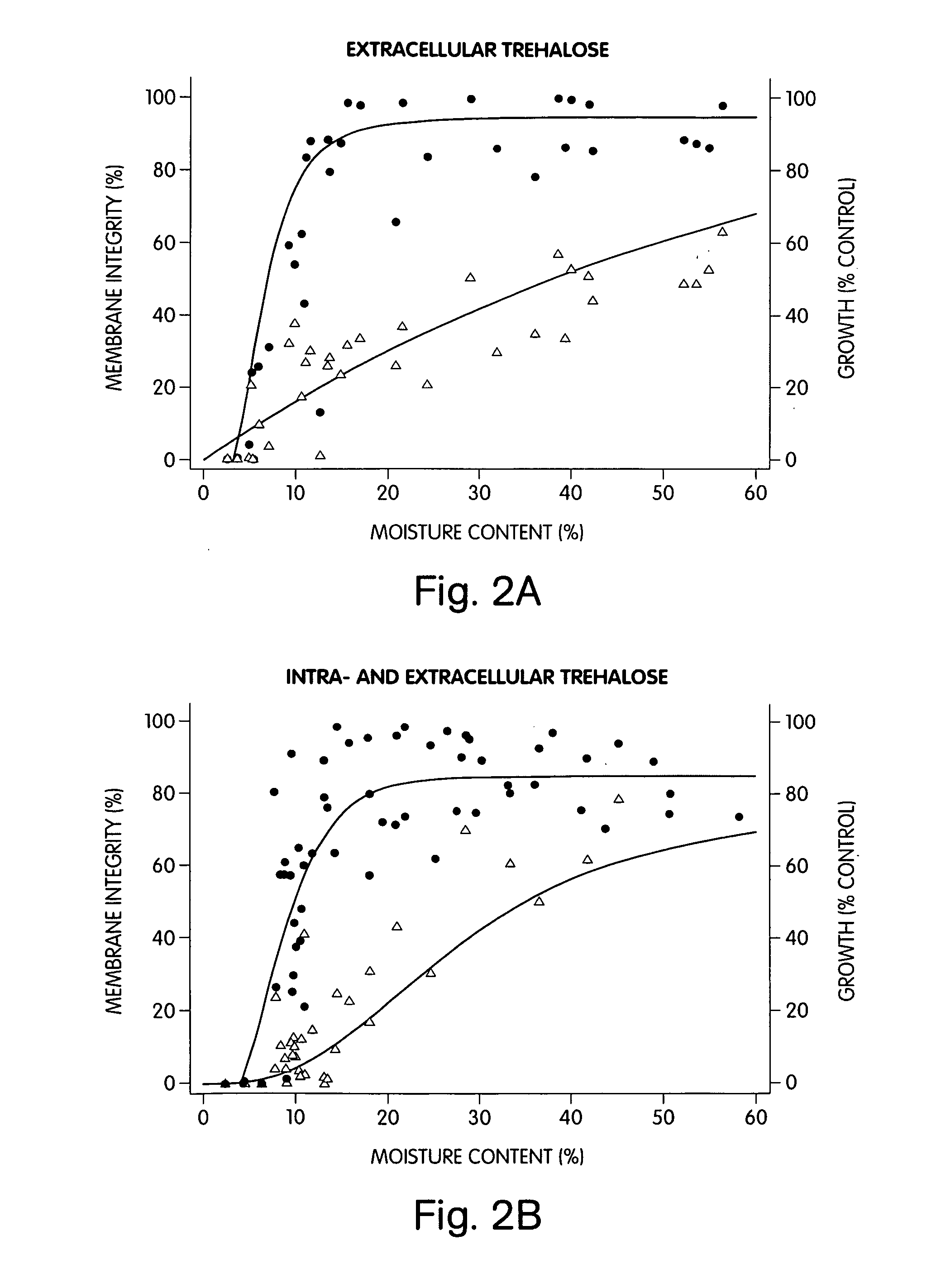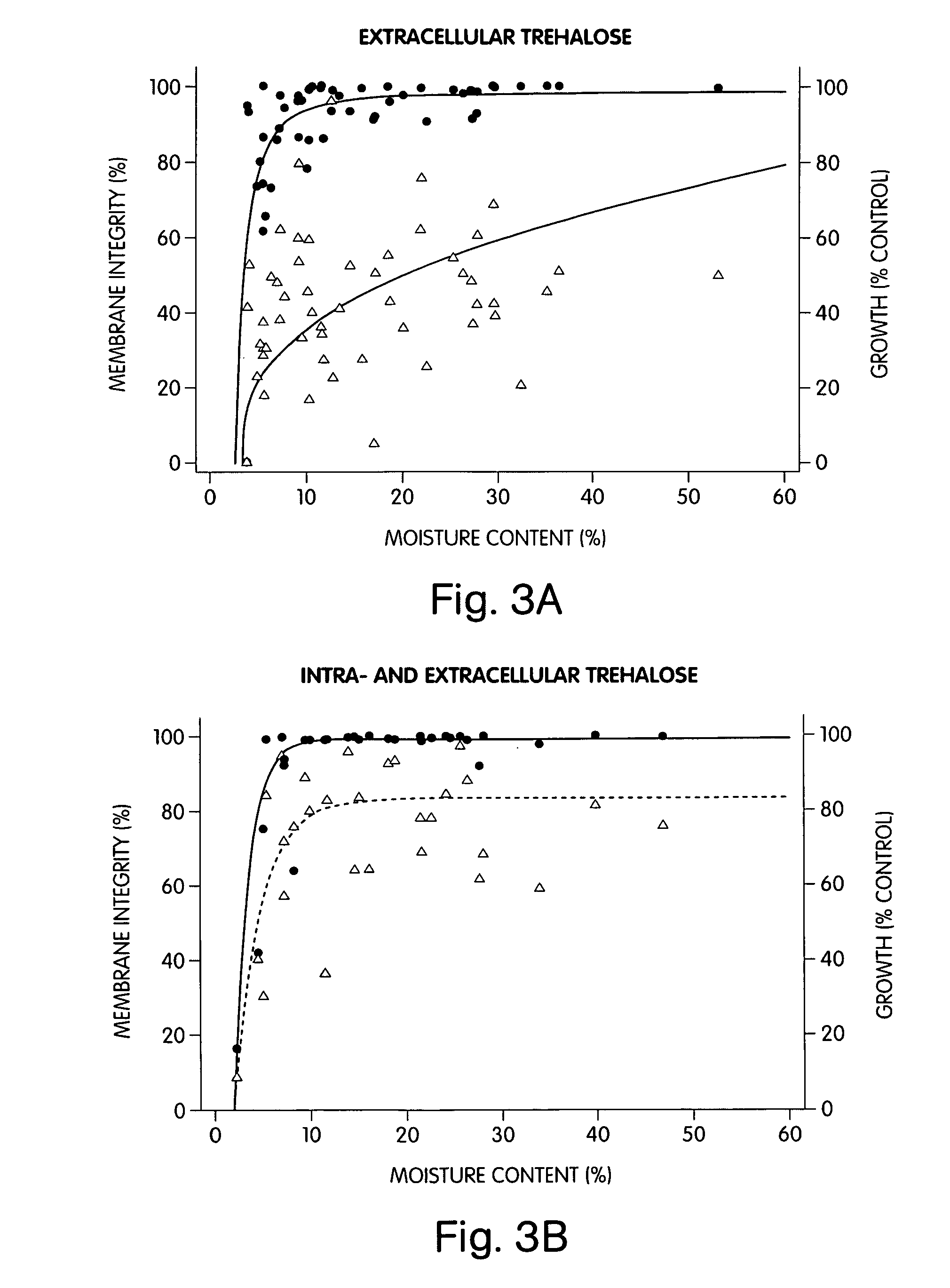Systems and methods for cell preservation
a cell and cell technology, applied in the field of cell preservation, can solve the problems of limited application of specialized equipment and detailed freezing protocols, and the toxicity of many cryoprotectants remains an issu
- Summary
- Abstract
- Description
- Claims
- Application Information
AI Technical Summary
Benefits of technology
Problems solved by technology
Method used
Image
Examples
example 1
[0101] This example illustrates various techniques for use in preserving cells in accordance with certain embodiments of the invention.
[0102] NIH 3T3 murine fibroblasts were cultured in Dulbecco's Modified Eagle's medium (DMEM) supplemented with 10% v / v bovine calf serum and 1% v / v penicillin-streptomycin at 37° C. with 10% CO2 in air. At 70% confluence, the cells were trypsinized and resuspended in culture medium. 20 microliter droplets of cells were plated onto sterile 12 mm circular glass cover slips and cultured for 30 min at 37° C. to allow for loose attachment of the fibroblasts to the cover slip. In some cases, poly-L-lysine-coated cover slips were used for attaching the cells to the cover slips. The cover slips were precoated with poly-L-lysine to assure uniform surface characteristics as follows. The cover slips were first prepared by soaking them in aqua regia overnight. The next day, the cover slips were rinsed in 50 mM NaHCO3, then in de-ionized H2O. The cover slips wer...
example 2
[0109] In this example, 3T3 murine fibroblast cells stored in a dried state in a hypertonic solution were recovered and analyzed to determine their viability, using tests for plasma membrane integrity and the ability of the fibroblasts to grow and divide in post-rehydration culture. In these experiments, cells loaded with internal trehalose and dried in external trehalose showed higher MI values after drying than cells without internal trehalose.
[0110] Following reversible poration with H5 alpha-hemolysin and the insertion of intracellular trehalose into the fibroblasts using methods similar to those described in Example 1, the fibroblasts attached to the glass cover slips were observed to have intact membranes and a spherical morphology (FIGS. 1A and 1B; scale bar represents 50 micrometers). The cells were dried using convective drying techniques (see Example 1).
[0111] The fibroblasts were exposed to a 528 mOsm / kg (hypertonic) solution of 0.2 M intracellular and / or extracellular ...
example 3
[0114] In this example, the effect of drying cells in an isotonic trehalose solution, in accordance with an embodiment of the invention, is illustrated.
[0115] An isotonic cell storage solution was prepared by diluting an RPMI-1640 solution with distilled water such that the osmolality of the intracellular and extracellular solutions containing 0.2 M trehalose was reduced to 310 mOsm / kg. 3T3 murine fibroblasts prepared according to the methods discussed in Example 1 were exposed to the isotonic cell storage solution, then convectively dried over desiccant at room temperature and stored overnight (i.e., for about 18 h). After storage, the cells were recovered, and the MI and percentage growth were assessed, using techniques similar to those described in Examples 1 and 2.
[0116] The plasma membrane of 3T3 fibroblasts in isotonic solutions of 0.2 M trehalose was found to remain relatively intact during drying, as illustrated in FIG. 3. Gross membrane damage was not observed until the c...
PUM
 Login to View More
Login to View More Abstract
Description
Claims
Application Information
 Login to View More
Login to View More - R&D
- Intellectual Property
- Life Sciences
- Materials
- Tech Scout
- Unparalleled Data Quality
- Higher Quality Content
- 60% Fewer Hallucinations
Browse by: Latest US Patents, China's latest patents, Technical Efficacy Thesaurus, Application Domain, Technology Topic, Popular Technical Reports.
© 2025 PatSnap. All rights reserved.Legal|Privacy policy|Modern Slavery Act Transparency Statement|Sitemap|About US| Contact US: help@patsnap.com



